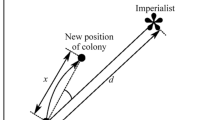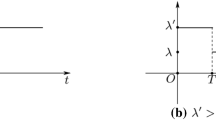Abstract
In vendor managed inventory (VMI) operations, it is necessary for both the suppliers and the customers to reach an agreement on the maximal and minimal inventory level. In practice, in VMI, inventory levels are decided manually by planning personnel, based on their experience and past operating records. From a system optimization point of view, the determination of the upper and lower inventory levels in storage areas is complicated, necessitating analysis of many factors. Consequently, it may not be possible to obtain the best planning results, to determine and maintain the optimum levels of inventory. In this study, we utilize network flow techniques to build a replenishment model to deal with the upper-and-lower inventory level control problem, with the objective of minimizing the total cost in short-term operations, subject to inventory level control and other operating constraints. The model is formulated as an integer network flow problem with side constraints and is characterized as NP-hard in terms of optimization. To efficiently and effectively solve the large-scale problems that occur in the real world, a solution algorithm is also developed. Finally, numerical tests are conducted using real data from a major retail company in northern Taiwan. The results demonstrate the usefulness of the proposed model and solution algorithm for replenishment planning in actual practice.



Similar content being viewed by others
References
Adulyasak Y, Cordeau JF, Jans R (2013) Formulations and branch-and-cut algorithms for multivehicle production and inventory routing problems. INFORMS J Comput 14:103–120
Aghezzaf EH (2008) Robust distribution planning for the suppliermanaged inventory agreements when demand rates and travel times are stationary. J Oper Res Soc 59(8):1055–1065
Angulo A, Nachtmann H, Waller MA (2004) Supply chain information sharing in a vendor managed inventory artnership. J Bus Logist 25(1):101–120
Archetti C, Bertazzi L, Laporte G, Speranza MG (2007) A branchand-cut algorithm for a vendor-managed inventory-routing problem. Transp Sci 41(3):382–391
Bertazzi L, Bosco A, Lagana D (2015) Managing stochastic demand in an inventory routing problem with transportation procurement. Omega 56:112–121
Chang TY, Liu MY, Hsu KC (2017) A study on the performance-based logistics model for the retail industry in Taiwan. Report no. 107-076-4309. Institute of Transportation, Ministry of Transportation and Communications, Taiwan
Chardaire P, Mckeown GP, Verity-Harrison SA, Richardson SB (2005) Solving a time-space network formulation for the convoy movement problem. Oper Res 53(2):219–230
Chu JC, Yan S, Huang HJ (2017) A multi-trip split delivery vehicle routing problem with time windows for inventory replenishment under stochastic travel times. Netw Spat Econ 17:41–68
Coelho LC, Laporte G (2013a) A branch-and-cut algorithm for the multi-product multi-vehicle inventory-routing problem. Int J Prod Res 51(23–24):7156–7169
Coelho LC, Laporte G (2013b) The exact solution of several classes of inventory-routing problems. Comput Oper Res 40(2):558–565
Coelho LC, Cordeau JF, Laporte G (2013) Thirty years of inventory routing. Transp Sci 48:1–19
Garey MR, Johnson DS (1979) Computers and intractability: a guide to the theory of NP-completeness. W.H. Freeman & Company, San Francisco
Haghani A, Oh S (1996) Formulation and solution of a multi-commodity, multi-modal network flow model for disaster relief operations. Transp Res A 30(3):231–250
Hewitt M, Nemhauser GL, Savelsbergh MWP, Song JH (2013) A branch-and-price guided search approach to maritime inventory routing. Comput Oper Res 40(5):1410–1419
Huang SH, Lin PC (2010) A modified ant colony optimization algorithm for multiitem inventory routing problems with demand uncertainty. Transp Res E Logist Transp Rev 46(5):598–611
Juan AA, Grasman SE, Caceres-Cruz J, Bektag T (2014) A simheuristic algorithm for the single-period stochastic inventory-routing problem with stock-outs. Simul Model Pract Theory 46:40–52
Kleywegt AJ, Nori VS, Savelsbergh MWP (2002) The stochastic inventory routing problem with direct deliveries. Transp Sci 36(1):94–118
Kleywegt AJ, Nori VS, Savelsbergh MWP (2004) Dynamic programming approximations for a stochastic inventory routing problem. Transp Sci 38(1):42–70
Lee HL, Seung** W (2008) The whose, where, and how of inventory control design. Supply Chain Manag Rev 12(8):22–29
Michel S, Vanderbeck F (2012) A column-generation based tactical planning method for inventory routing. Oper Res 60(2):382–397
Raa B, Aghezzaf EH (2009) A practical solution approach for the cyclic inventory routing problem. Eur J Oper Res 192(2):429–441
Roldán RF, Basagoiti R, Coelho LC (2016) Robustness of inventory replenishment and customer selection policies for the dynamic and stochastic inventory-routing problem. Comput Oper Res 74:14–20
Savelsbergh MWP, Song JH (2008) An optimization algorithm for the inventory routing problem with continuous moves. Comput Oper Res 35(7):2266–2282
Shahabi M, Akbarinasaji S, Unnikrishnan A, James R (2013) Integrated inventory control and facility location decisions in a multi-echelon supply chain network with hubs. Netw Spat Econ 13:497–514
Silva F, Gao L (2013) A joint replenishment inventory-location model. Netw Spat Econ 13:107–122
Simchi-Levi D, Chen X, Bramel J (2005) The logic of logistics: theory, algorithms, and applications for logistics and supply chain management. Springer-Verlag, New York
Solyalı O, Süral H (2008) A single supplier-single retailer system with an order-up-to level inventory policy. Oper Res Lett 36(5):543–546
Solyalı O, Cordeau JF, Laporte G (2012) Robust inventory routing under demand uncertainty. Transp Sci 46(3):327–340
Yan S, Chen HL (2002) A scheduling model and a solution algorithm for inter-city bus carriers. Transp Res A 36:805–825
Yan S, Shih YL (2009) Optimal emergency roadway repair and subsequent relief distribution. Comput Oper Res 36(6):2049–2065
Yan S, Lin CK, Chen SY (2014) Logistical support scheduling under stochastic travel times given an emergency repair schedule. Comput Ind Eng 67:20–35
Yan S, Hsiao FY, Chen YC (2015) Inter-school bus scheduling under stochastic travel times. Netw Spat Econ 15:1049–1074
Yan S, Wang WW, Chang GW, Lin HC (2016) Effective ready mixed concrete supply adjustments with inoperative mixers under stochastic travel times. Transp Lett 8:286–300
Yan S, Lin JR, Chen YC, **e FR (2017) Rental bike location and allocation under stochastic demands. Comput Ind Eng 107:1–11
Acknowledgements
This research was supported by a grant (MOST-104-2221-E-008-031) from the Ministry of Science and Technology, Taiwan. We thank the retail company for kindly providing the test data and their valuable opinions. We also thank two anonymous reviewers for their helpful comments and suggestions to improve the presentation of the paper.
Author information
Authors and Affiliations
Corresponding author
Ethics declarations
Conflict of Interest
The authors declare that they have no conflict of interest.
Human and Animal Rights and Informed Consent
This paper does not contain any studies with human participants or animals performed by any of the authors. Informed consent was obtained from all individual participants included in the study.
Additional information
Publisher’s Note
Springer Nature remains neutral with regard to jurisdictional claims in published maps and institutional affiliations.
Rights and permissions
About this article
Cite this article
Lin, CK., Yan, S. & Hsiao, FY. Optimal Inventory Level Control and Replenishment Plan for Retailers. Netw Spat Econ 21, 57–83 (2021). https://doi.org/10.1007/s11067-020-09503-8
Published:
Issue Date:
DOI: https://doi.org/10.1007/s11067-020-09503-8




